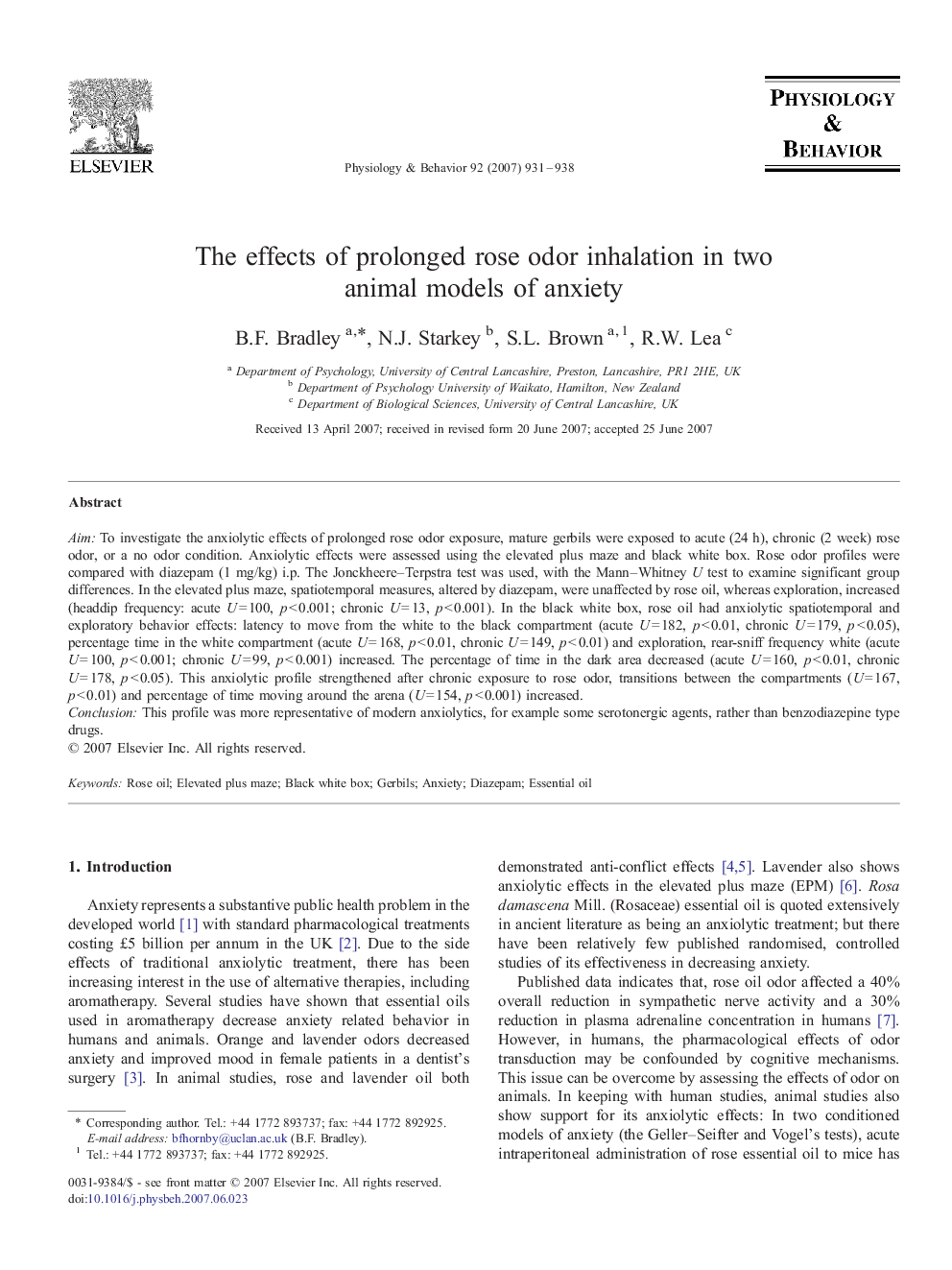| کد مقاله | کد نشریه | سال انتشار | مقاله انگلیسی | نسخه تمام متن |
|---|---|---|---|---|
| 2845930 | 1166405 | 2007 | 8 صفحه PDF | دانلود رایگان |

AimTo investigate the anxiolytic effects of prolonged rose odor exposure, mature gerbils were exposed to acute (24 h), chronic (2 week) rose odor, or a no odor condition. Anxiolytic effects were assessed using the elevated plus maze and black white box. Rose odor profiles were compared with diazepam (1 mg/kg) i.p. The Jonckheere–Terpstra test was used, with the Mann–Whitney U test to examine significant group differences. In the elevated plus maze, spatiotemporal measures, altered by diazepam, were unaffected by rose oil, whereas exploration, increased (headdip frequency: acute U = 100, p < 0.001; chronic U = 13, p < 0.001). In the black white box, rose oil had anxiolytic spatiotemporal and exploratory behavior effects: latency to move from the white to the black compartment (acute U = 182, p < 0.01, chronic U = 179, p < 0.05), percentage time in the white compartment (acute U = 168, p < 0.01, chronic U = 149, p < 0.01) and exploration, rear-sniff frequency white (acute U = 100, p < 0.001; chronic U = 99, p < 0.001) increased. The percentage of time in the dark area decreased (acute U = 160, p < 0.01, chronic U = 178, p < 0.05). This anxiolytic profile strengthened after chronic exposure to rose odor, transitions between the compartments (U = 167, p < 0.01) and percentage of time moving around the arena (U = 154, p < 0.001) increased.ConclusionThis profile was more representative of modern anxiolytics, for example some serotonergic agents, rather than benzodiazepine type drugs.
Journal: Physiology & Behavior - Volume 92, Issue 5, 5 December 2007, Pages 931–938